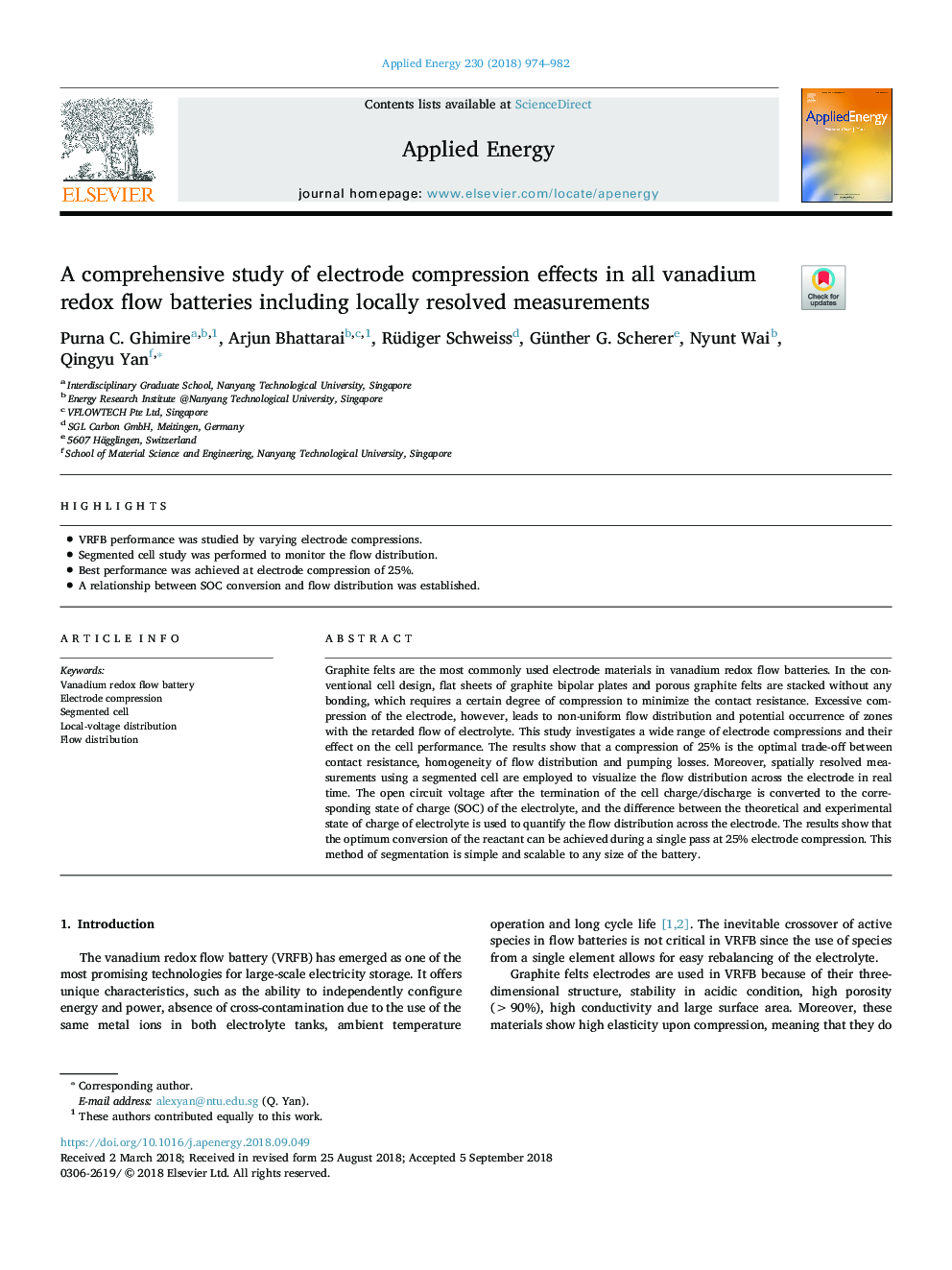| Article ID | Journal | Published Year | Pages | File Type |
|---|---|---|---|---|
| 10131441 | Applied Energy | 2018 | 9 Pages |
Abstract
Graphite felts are the most commonly used electrode materials in vanadium redox flow batteries. In the conventional cell design, flat sheets of graphite bipolar plates and porous graphite felts are stacked without any bonding, which requires a certain degree of compression to minimize the contact resistance. Excessive compression of the electrode, however, leads to non-uniform flow distribution and potential occurrence of zones with the retarded flow of electrolyte. This study investigates a wide range of electrode compressions and their effect on the cell performance. The results show that a compression of 25% is the optimal trade-off between contact resistance, homogeneity of flow distribution and pumping losses. Moreover, spatially resolved measurements using a segmented cell are employed to visualize the flow distribution across the electrode in real time. The open circuit voltage after the termination of the cell charge/discharge is converted to the corresponding state of charge (SOC) of the electrolyte, and the difference between the theoretical and experimental state of charge of electrolyte is used to quantify the flow distribution across the electrode. The results show that the optimum conversion of the reactant can be achieved during a single pass at 25% electrode compression. This method of segmentation is simple and scalable to any size of the battery.
Related Topics
Physical Sciences and Engineering
Energy
Energy Engineering and Power Technology
Authors
Purna C. Ghimire, Arjun Bhattarai, Rüdiger Schweiss, Günther G. Scherer, Nyunt Wai, Qingyu Yan,
